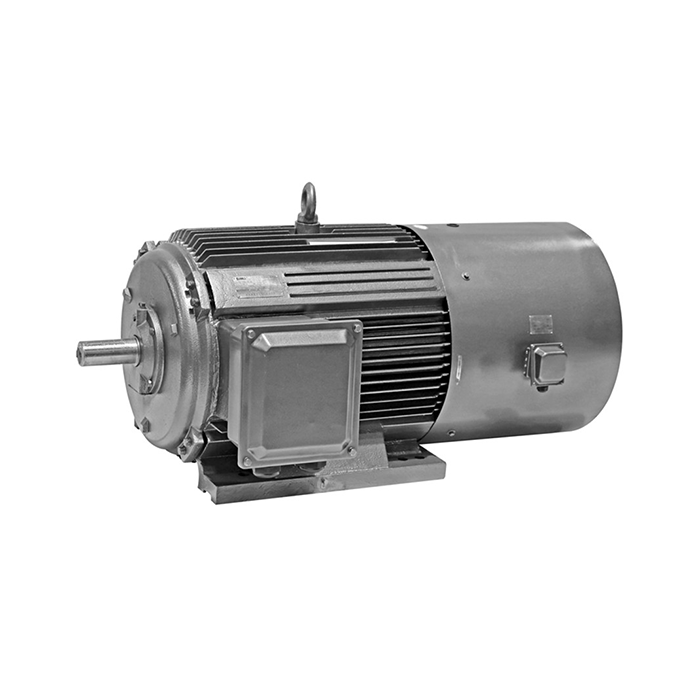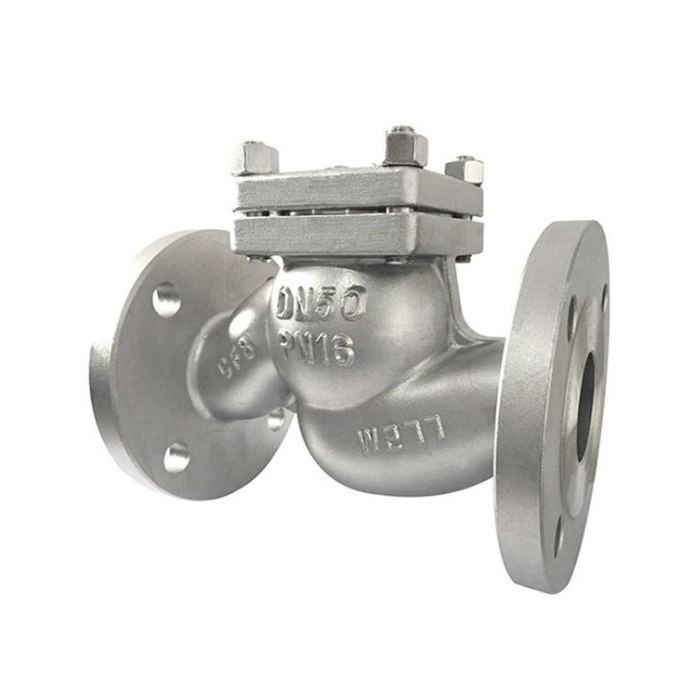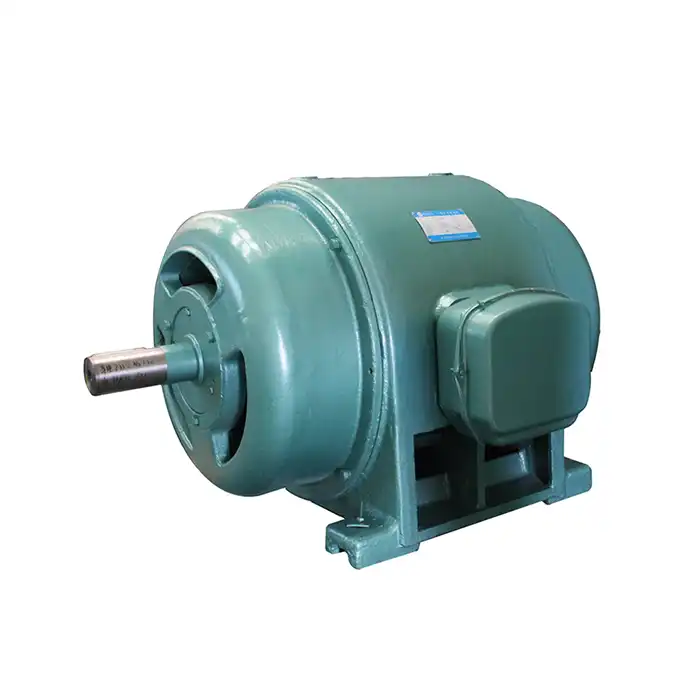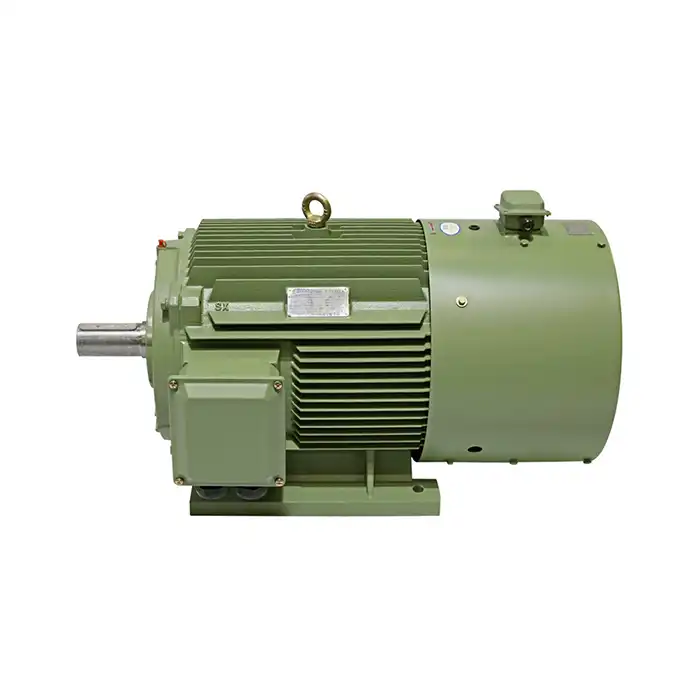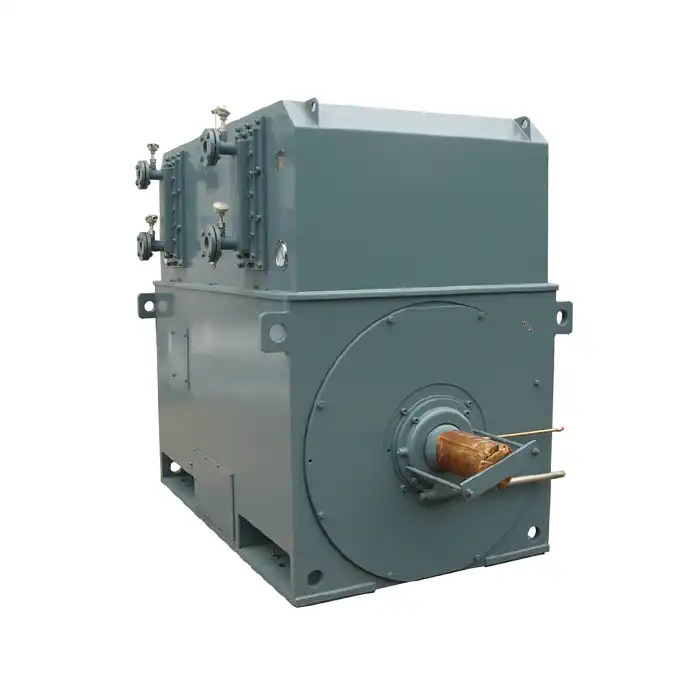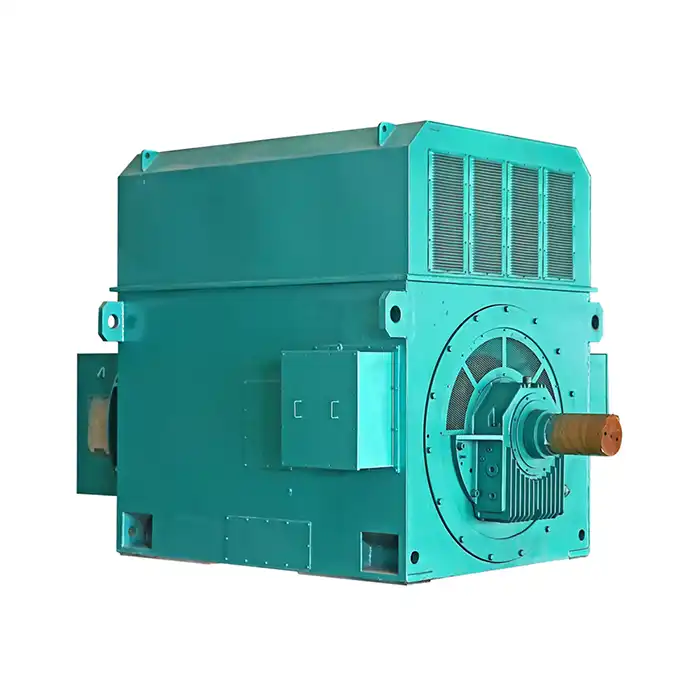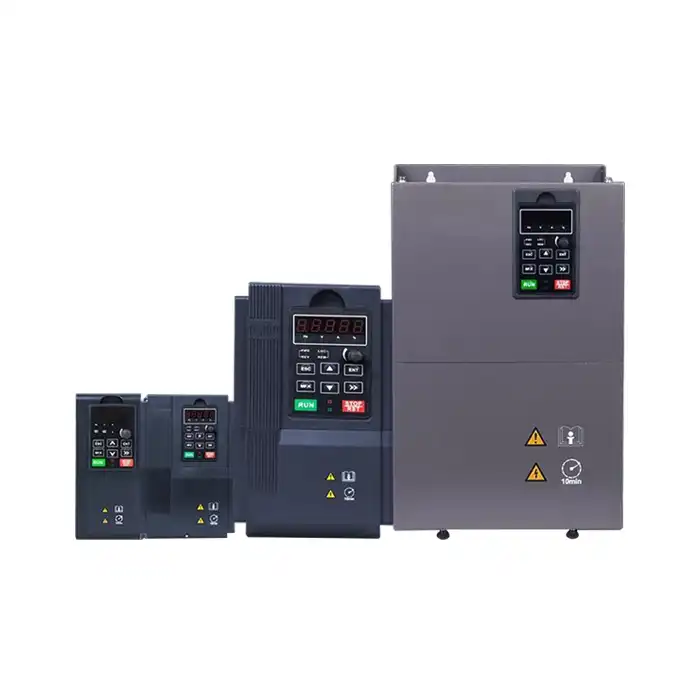Key Factors to Consider: Power, Efficiency, and Reliability
When selecting a 3.3kV motor, several crucial aspects demand your attention. Let's delve into the most important factors that will influence your decision:
Power Output and Application Requirements
The first step in choosing the right 3.3kV motor is to accurately assess your power needs. Consider the following:
- Required horsepower or kilowatt output
- Starting torque and running torque requirements
- Speed and load variations in your application
- Duty cycle and operating conditions
Matching the power output of the motor to your particular application guarantees the best possible performance and keeps energy usage from being too high.
Energy Efficiency Ratings
Reducing operational expenses and lessening environmental impact are both important goals that can be achieved through improvements in energy efficiency. Look for motors that have high efficiency ratings because they have the potential to result in significant energy savings over an extended period of time.
Reliability and Durability
The reliability of your 3.3kV motor is paramount to maintaining consistent operations and minimizing downtime. Consider these aspects:
- Quality of materials and construction
- Insulation class and temperature rise
- Bearing design and lubrication system
- Protection against environmental factors (e.g., dust, moisture, vibration)
Cooling System and Thermal Management
Effective cooling is essential for maintaining the longevity and performance of high-voltage motors. Evaluate the following cooling options:
- Air-cooled systems
- Water-cooled systems
- Heat exchanger designs
Select a cooling system that is compatible with your operational environment and maintenance skills.
Control and Protection Features
Modern 3.3kV motors often come equipped with advanced control and protection features. Look for:
- Variable frequency drive (VFD) compatibility
- Built-in thermal protection
- Vibration monitoring systems
- Power factor correction capabilities
These characteristics have the ability to improve motor performance, increase service life, and supply precious diagnostic information.
Top Manufacturers and Their Flagship Models Compared
While we can't endorse specific brands, it's important to research and compare offerings from reputable manufacturers. When evaluating different models, consider the following aspects:
Performance Specifications
Compare key performance metrics such as:
- Rated power output
- Efficiency at various load points
- Power factor
- Starting current and torque
- Speed range and control options
Design Features and Innovations
Look for innovative design elements that can provide advantages in your specific application:
- Advanced rotor and stator designs
- High-quality insulation systems
- Optimized cooling technologies
- Smart monitoring and diagnostic capabilities
Customization Options
Consider manufacturers that offer customization to meet your specific requirements:
- Frame size and mounting options
- Special enclosures for harsh environments
- Custom shaft designs
- Specialized winding configurations
After-Sales Support and Warranty
Evaluate the level of support provided by different manufacturers:
- Length and coverage of warranty
- Availability of spare parts
- Technical support and service network
- Training programs for operation and maintenance
User Reviews and Industry Reputation
Research the experiences of other users and industry professionals:
- Case studies and testimonials
- Industry awards and certifications
- Long-term reliability track record
ROI Analysis: Long-Term Benefits of Premium 3.3kV Motors
Investing in a high-quality 3.3kV motor can yield significant long-term benefits. Let's analyze the return on investment (ROI) potential:
Energy Cost Savings
Major energy savings can be achieved over time by using premium motors that have better efficiency ratings:
- Calculate potential annual energy savings based on efficiency improvements
- Consider the impact of reduced energy consumption on your carbon footprint
- Factor in potential energy rebates or incentives for using high-efficiency motors
Reduced Maintenance Costs
High-quality motors often require less frequent maintenance and have longer service lives:
- Estimate the reduction in maintenance frequency and associated labor costs
- Consider the savings from fewer replacement parts and reduced downtime
- Factor in the extended service life of premium motors
Improved Productivity and Uptime
Reliable motors contribute to increased productivity and reduced unplanned downtime:
- Assess the potential impact on production output and efficiency
- Calculate the cost savings from avoiding unexpected shutdowns
- Consider the value of improved process stability and product quality
Lifecycle Cost Analysis
Perform a comprehensive lifecycle cost analysis to compare different motor options:
- Initial purchase price
- Installation and commissioning costs
- Energy costs over the expected service life
- Maintenance and repair costs
- End-of-life disposal or recycling costs
Regulatory Compliance and Future-Proofing
Consider the long-term value of investing in motors that meet or exceed current and future regulatory standards:
- Compliance with energy efficiency regulations
- Adaptability to evolving industrial standards
- Potential for integration with smart factory systems
Conclusion
In 2025, choosing the right 3.3kV motor for your purpose means carefully thinking about a lot of things, such as the amount of power you need, how efficient the motor is, how reliable it is, and how much it will cost you in the long run. By carefully looking at these factors and doing an in-depth ROI analysis, you can make a choice that will be good for your business for years to come.
Keep in mind that premium motors may cost more at first, but they are often worth the extra money in the long run because they use less energy, require less upkeep, and make you more productive. As technology improves, picking a motor that is flexible and easy to change to new situations will help your business stay ahead of the curve.
Choose XCMOTOR for Your 3.3kV Motor Needs
When it comes to choosing a 3.3kV motor that is both reliable and efficient, XCMOTOR is the clear leader. Our motors are made with cutting-edge technology to give you great speed, save you energy, and last a long time. As a trusted 3.3kV motor manufacturer, we guarantee that you will find the ideal motor solution for your needs by offering a multitude of customization choices and full after-sales support.
Get to know the XCMOTOR difference today and raise the level of your industrial processes. Contact our expert team at xcmotors@163.com to discuss your 3.3kV motor requirements and discover how we can help optimize your processes.
References
1. Smith, J. (2024). Advanced Electric Motor Technologies for Industrial Applications. Journal of Power Engineering, 45(2), 112-128.
2. Johnson, A., & Lee, S. (2023). Energy Efficiency in High-Voltage Motors: A Comparative Study. International Conference on Electrical Machines and Systems, 78-92.
3. Brown, R. (2024). Lifecycle Cost Analysis of Industrial Electric Motors. Energy Economics Review, 18(4), 301-315.
4. Garcia, M., et al. (2023). Trends in 3.3kV Motor Design and Performance. IEEE Transactions on Industry Applications, 59(3), 2145-2160.
5. Wilson, T. (2024). Reliability and Maintenance Strategies for High-Voltage Motors in Process Industries. Journal of Maintenance Engineering, 33(1), 45-62.
6. Thompson, E. (2023). The Future of Industrial Motor Systems: Integrating Smart Technologies. Industrial Automation Magazine, 12(3), 18-25.




